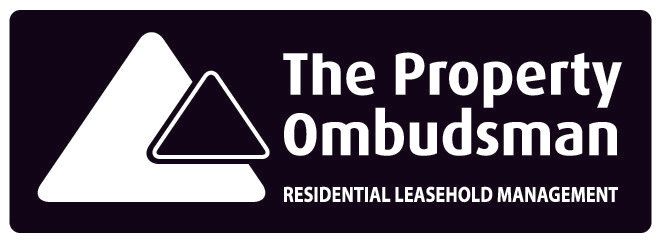£1BN Combustible Cladding Fund Announced in Budget
Leanne Gresswell
In yesterday’s Budget, the Chancellor announced a £1 Billion fund to remove and replace combustible cladding over the next 18 months.
The announcement came on March 11th 2020, not far short of three years after the tragic Grenfell Tower fire. The size of the fund itself indicates the scale of the problem; it’s worth noting that £600 million has already been made available by the government, for the remediation of the highest risk non-ACM cladding – the type that was in place on Grenfell Tower. This £1 billion will be provided in addition.
In case you’ve only got a quick five minutes to skim the details, here’s what you need to know:
- The total government investment to-date is now £1.6 billion.
- The funds will be made available over 18 months, to buildings in both the social and private residential sectors.
- They will apply to buildings of 18 meters and above, that have such cladding systems installed.
- In the private sector, the funds will be of benefit to the leaseholders.
- Building owners (usually freeholders) remain legally responsible for the safety of their properties and residents. Either directly or via their Managing Agent.
- Building owners who have already committed to fund the removal and replacement themselves, are expected to honour their commitment.
- Regulatory changes are still expected to be put in place.
- The total invested £1.6 billion will be the government's limit to supporting the non-ACM remediation.
- The fund does not absolve industry from responsibility for failures that led to the use of unsafe cladding materials on such buildings.
Or, if you've got a little longer, here are some further details...
The announcement follows a letter sent to the Chancellor earlier this year, by Residents groups and professional/trade bodies (including ARMA), calling for a multibillion-pound emergency fund to "unblock the process and ensure the safety of residents up and down the country for generations to come." This letter was sent after it was identified that half a million people could be living in buildings made unsafe by combustible cladding.
The "unsafe" combination that qualifies a building to use the funds, is being 18 more meters in height with an unsafe non-ACM cladding system in place. Such buildings have been deemed by experts to pose the greatest threat to public safety, and therefore must be remediated. By providing these funds, the government is making it clear that there is no excuse for building owners to not prioritise and ensure residents' safety.
That said, while £1 billion is no doubt a huge and welcome amount, there's already been concerns raised as to whether it will be enough. Which is unlikely. That's why building owners (particularly in the social sector) who have already committed to fund the remediation themselves, are expected to follow through on their commitments, leaving the funds available to those who cannot afford the cost.
Another condition of the funding, is that building owners must pursue claims against those responsible for installing unsafe cladding in the first place. Monies from such claims will be reimbursed to the government. In other words, no-one is off the hook. The government simply (and rightly) want to prioritise public safety. We can only hope that, alongside building owners who are able to fund remediations themselves, £1.6 billion will be enough.
The funds are being made available ahead of regulatory changes, giving building owners a chance to carry out their cladding replacements and ensure residents' safety. Phase 2 hearings will resume on Monday 16th March. In the meantime, you can find more information on the government website.

From autumn 2025, under the Economic Crime and Corporate Transparency Act 2023, all directors and Persons with Significant Control (PSCs) must verify their identity with Companies House. While many firms are handling this quietly in the background, we believe our clients deserve full visibility into what’s happening and how we’re preparing on their behalf. So, What’s Changing? This isn’t just another form to complete. The law is designed to: Stop people from using companies for criminal or dishonest purposes Improve transparency in the UK’s corporate system Ensure every director is personally identifiable and accountable If you don’t verify your identity, you may: Be barred from acting as a director Prevent your company from filing legal documents Be subject to fines or disqualification How Are We Supporting Our Clients? We’ve rolled out a full, structured support plan to help directors meet the new requirements. Here’s what Cleaver are doing : 1. Notifying Directors Early - We’ve contacted all directors across the companies we manage using tailored letters and templates, clearly explaining what’s required and when. 2. Offering Step-by-Step Guidance - We’ve created easy-to-understand materials to help directors: Choose how to verify (online, Post Office, or via an ACSP) Understand the process Get support if they’re unsure where to start 3. Tracking Progress Internally - We maintain a compliance checklist for every company we manage. This allows us to: Track which directors have verified Send timely reminders to those who haven’t Avoid last-minute compliance issues 4. Helping Boards with Removal (If Needed) - If a director refuses to verify and the company’s Articles allow for it, we’ll assist with: Legal guidance Notices and paperwork Filing director removal forms with Companies House 5. Answering Questions Along the Way - We’ve trained our team to answer queries about the new rules and if needed, we’ll help connect you with a solicitor or accountant who can act as an Authorised Corporate Service Provider (ACSP). Why Does This Matter? This legislation is a major step forward in protecting companies and the people who run them. We believe in staying ahead of compliance and ensuring our clients feel confident, not confused. By taking this proactive approach, Cleaver Property Management is helping to: Protect directors from penalties Ensure companies stay compliant Promote trust and transparency in the leasehold management sector Do You Need Help? If you’re a director and aren’t sure what to do next, we’re here to help you understand your responsibilities and how to meet them. Email your Cleaver Property Management contact or reach us at info@cleaverpropertymanagement Cleaver Property Management – Supporting Directors. Safeguarding Companies.













